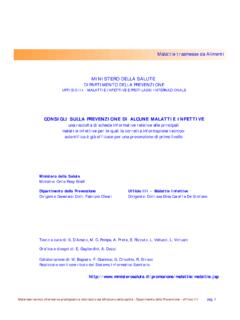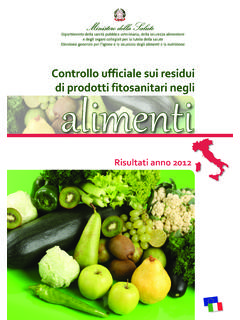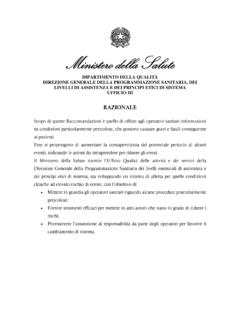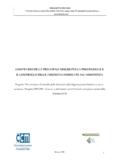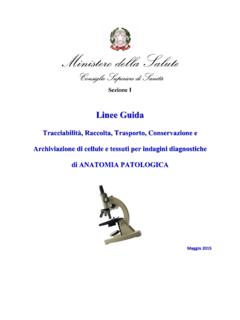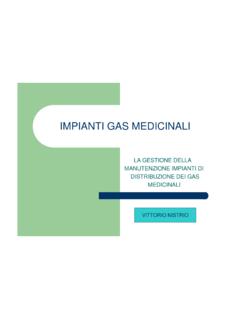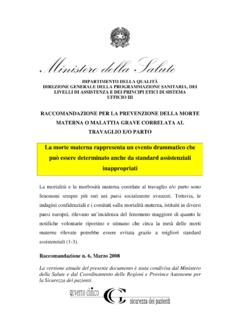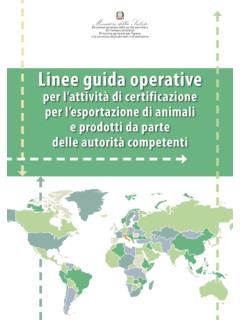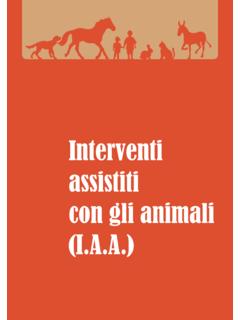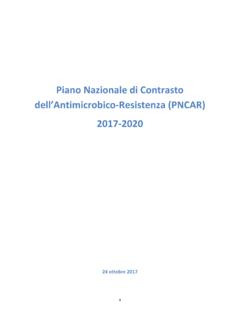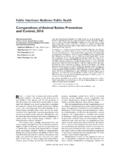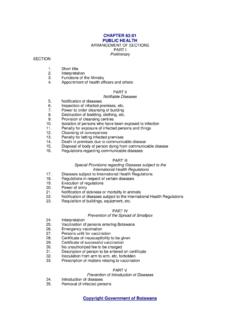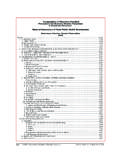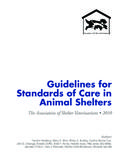Transcription of The Italian Public Health System for Animal Health …
1 The Italian Public Health System for Animal Health and Food Safety COMPETENT AUTHORITIES The Italian Ministry of Health (MOH) The Italian Ministry of Health (MOH) is the central body of the National Health Services dealing with orientation and planning on issues of Public Health , veterinary Health , food hygiene and safety. The Italian Constitution confers some exclusive competences on the Central Authority (including international affairs, themes of general interest, import controls and international disease protection) and defines the areas where competences are shared between State and Regions.
2 Italy is divided into 19 Regions and two Autonomous Provinces which are responsible for planning, coordinating, managing, authorizing and verifying controls within their territories. The Permanent Conference State-Regions manages the coordination between Central Authority and Regional Services, so as to ensure a continuous dialogue between the two Authorities. Organization of the Ministry of Health The Ministry of Health is organized in a General Secretariat and 12 Directorates-General. The following three Directorates deal with hygiene and food safety, nutrition and veterinary Public Health : Directorate-General for Animal Health and veterinary medicinal products (DGSAF); Directorate-General for hygiene, food safety and nutrition (DGISAN); Directorate-General for collegial bodies for Health protection( DGOCTS).
3 The Directorate-General for Animal Health and veterinary medicinal products (DGSAF) is responsible for drawing up national programs for the eradication of Animal diseases and guidelines for the control of Animal welfare on farms, by ensuring effective controls on imported animals, food of Animal origin and feedingstuffs at the Border Inspection Posts (BIPs). It also provides general guidelines for feedingstuffs and Animal nutrition; issues marketing authorizations for veterinary medicinal products, aimed at licensing of manufacturing, importation, authorization for Compliance with GMP (Good Manufacturing Practices).
4 The Directorate-General for hygiene, food safety and nutrition (DGISAN) is concerned with: Health and safety of food production and marketing, primary products included; control plans of the food chain and operational guidelines for official controls on imported food; management of RASFF System and unit crisis for food, feed, Animal by-products; nutrition and products for use in special diets; functional foods; food supplements; herbal products for food; nutrition labeling; nutrition education; Health aspects related to food technology and novel foods; genetically modified organisms; additives, food flavorings, contaminants and food contact materials; plant protection products; hygiene and safety of food for export; investigations, audits and inspections in the areas of competence.
5 The Directorate-General for Collegial bodies for Health protection (DGOCTS) is the national EFSA contact point. It is responsible for the physical, chemical and biological risk assessment for food safety. It is also the national contact point for the Food Safety National Committee. It is responsible for the coordination and planning of actions aimed at assessing risks in the food chain , as well as of the activities of the Committee of Consumers and Producers Associations, in collaboration with the Directorate-General for hygiene, food safety and nutrition (DGISAN). Peripheral offices of the MOH (BIPs, USMAF,UVAC) The following local ministerial offices are responsible for import controls and intra-Union trade: 23 Border Inspection Posts (BIPs) for import controls on animals, food of Animal origin and feedingstuffs; 37 local offices at the main ports and airports, responsible for import controls on food of non- Animal origin, which depend on 12 main Maritime, Aviation and Border Health Office (USMAF); 17 Veterinary Offices for Compliance with EU Requirements (UVAC), responsible for intra Community trade of animals, food of Animal origin and feed.
6 Carabinieri Tutela Salute (NAS) The Nucleo Anti Sofisticazioni (NAS the Food Law Enforcement Department) is a special unit of the Italian Corps of Carabinieri, which operates under the supervision and direction of the Ministry of Health . It is organized into a central command, 3 main local units and 38 territorial inspection units. It carries out investigations and controls on illegal adulteration of foodstuffs, fraud, and illegal trafficking of medicines, both on its own initiative or upon request of MOH offices, also including hygiene inspections, verification of control systems, sampling and analysis of products and examination of authorization documents.
7 Regional Public Health Services (RPHS) Following the amendment of the Italian Constitution performed on 2001, human and Animal Health , food and feed safety and Animal welfare are currently issues of common responsibility at national and regional level. A permanent cooperation between Regions and Central Authority is ensured by the Permanent Conference between State, Regions and Autonomous Provinces. The Central Authority retains the responsibility of import controls and international prophylaxis and export. Moreover, it is worth mentioning that the Ministry of Agricultural, Food and Forestry Policies (MIPAAF) is responsible for controls on quality (recipes) and traceability (labels) of food and feed and on plant Health .
8 The 19 Regions and 2 Autonomous Province are organized into Regional Public Health Services (RPHS), most of which are divided in two sections: the Regional Veterinary Service (RVS), which is responsible for food of Animal origin, Animal Health and welfare and feed safety; the Regional Food Hygiene and Nutrition Service (RFHNS-SIAN), which is responsible for products of non- Animal origin, food supplements and food contact materials. Local Health Units (LHU-AUSL) are present in each Region and act as Public bodies responsible for the organization and management of all Public Health facilities at local level.
9 Local Health Units (LHU - ASL) The Local Health Units have a high degree of managerial, administrative, financial and technical autonomy and are organized in sanitary districts, departments of prevention and hospital services. Public Health responsibilities are shared between two separate services within the Department of Prevention: the Food Hygiene and Nutrition Service (SIAN), and the Local Veterinary Services (LVS). These latter are responsible for: Animal Health and welfare, food of Animal origin and feedingstuffs, and are usually divided into three different areas: area A - responsible for Animal Health ; area B responsible for food of Animal origin; area C responsible for Animal breeding, Animal production and by-products.
10 This distinction between areas of activity does not exist in all the LHU-ASL and the allocation of resources may vary according to the territory compositions where each local Health unit operate. The majority of inspectors in the Local Veterinary Service (LVS) are veterinarians. Approximately a total of 5,227 full-time veterinarians are employed in the LHU-ASL. The Food Hygiene and Nutrition Service (SIAN) is responsible for food of non- Animal origin. The staff of this Service is composed by some medical doctors and mostly by technicians. The staff responsible for control activities is specifically designated for this purpose, whereas other staff is also involved in other Public Health activities.
